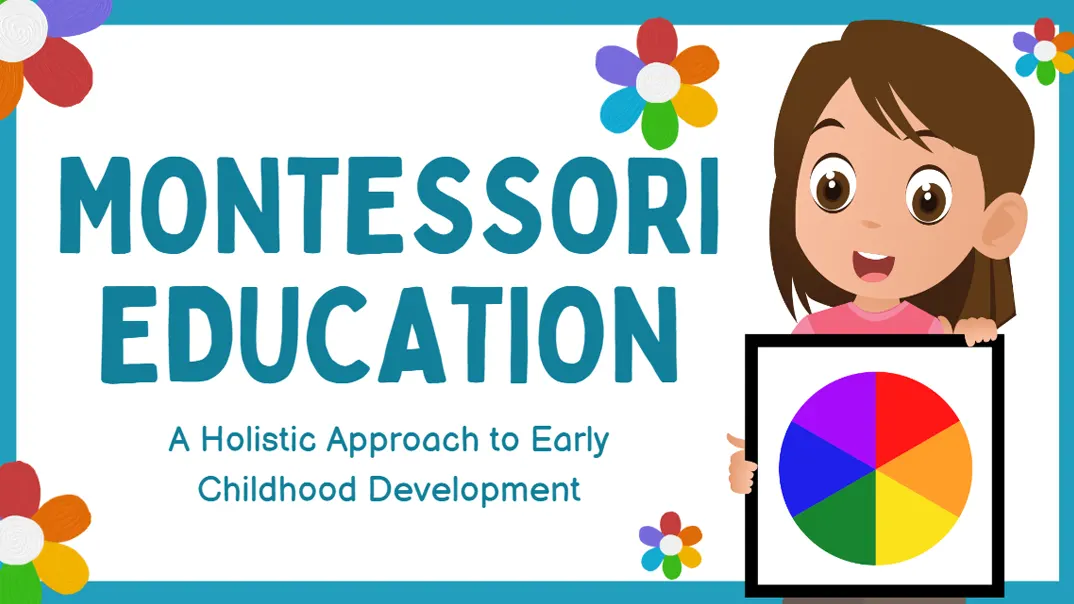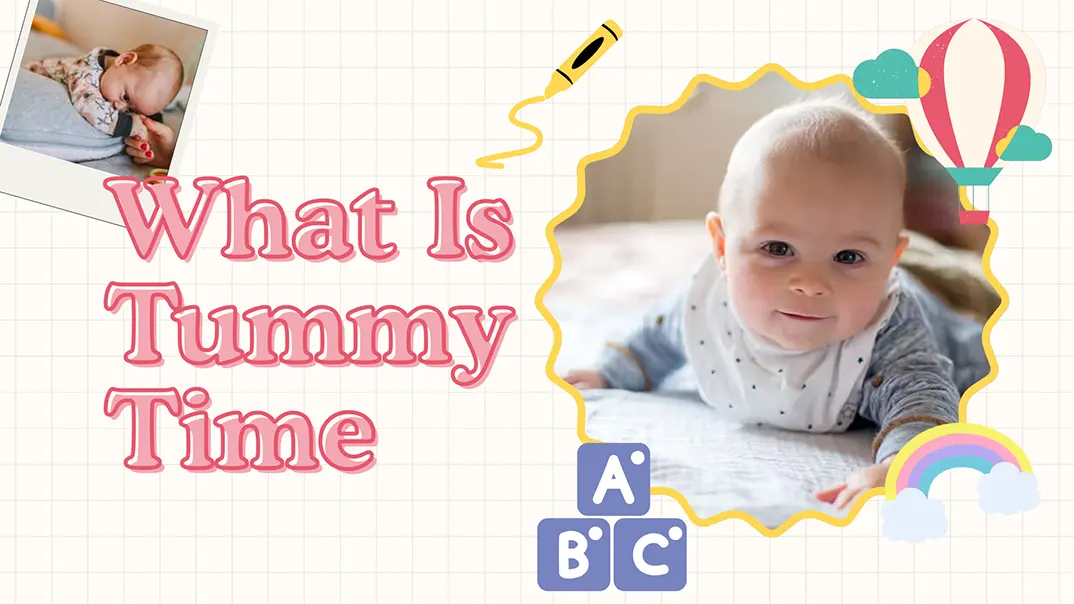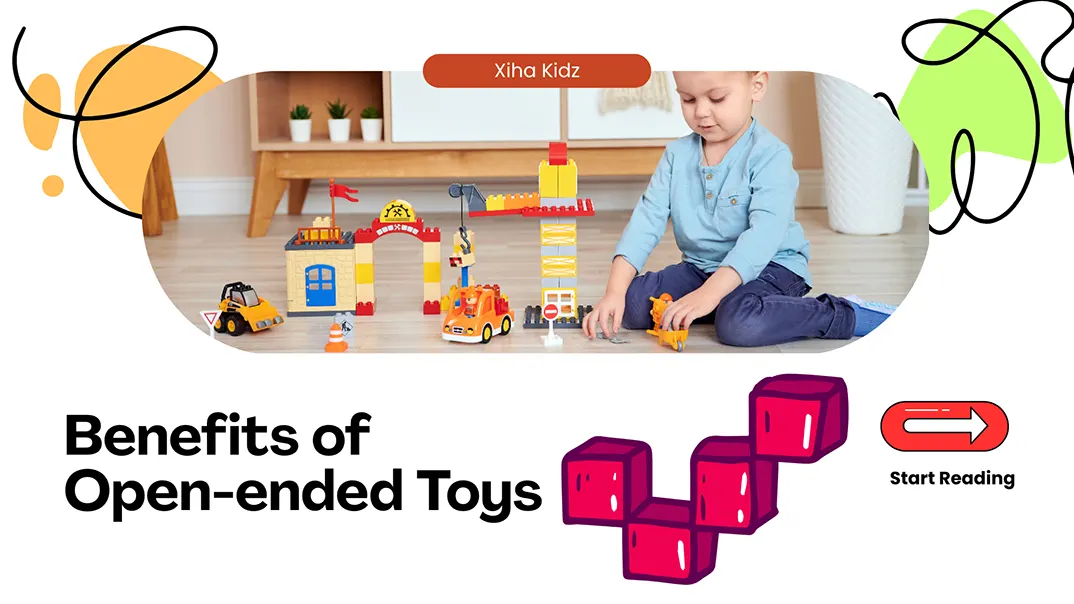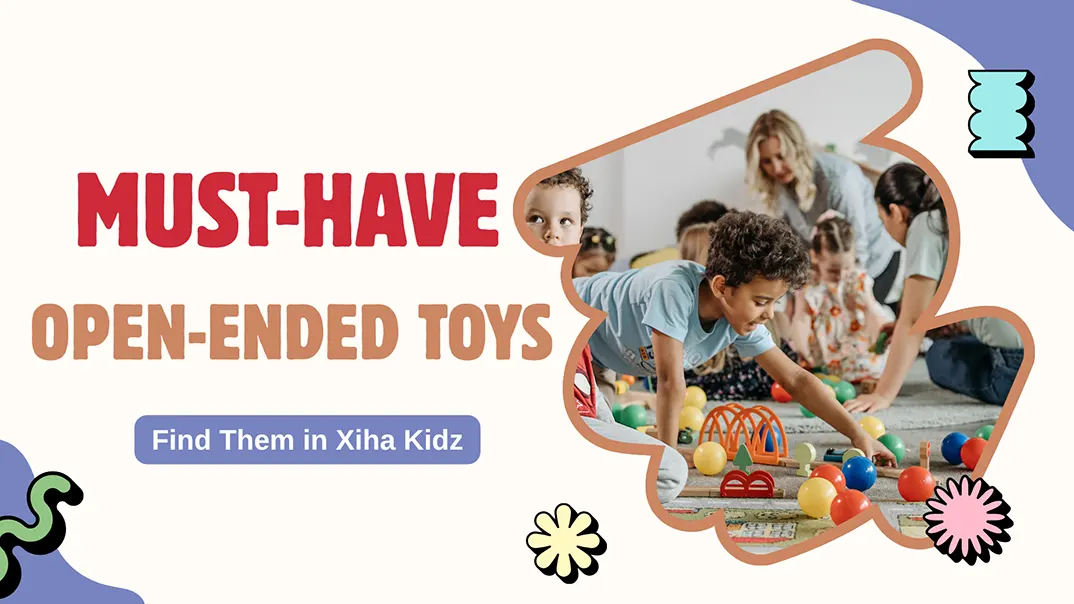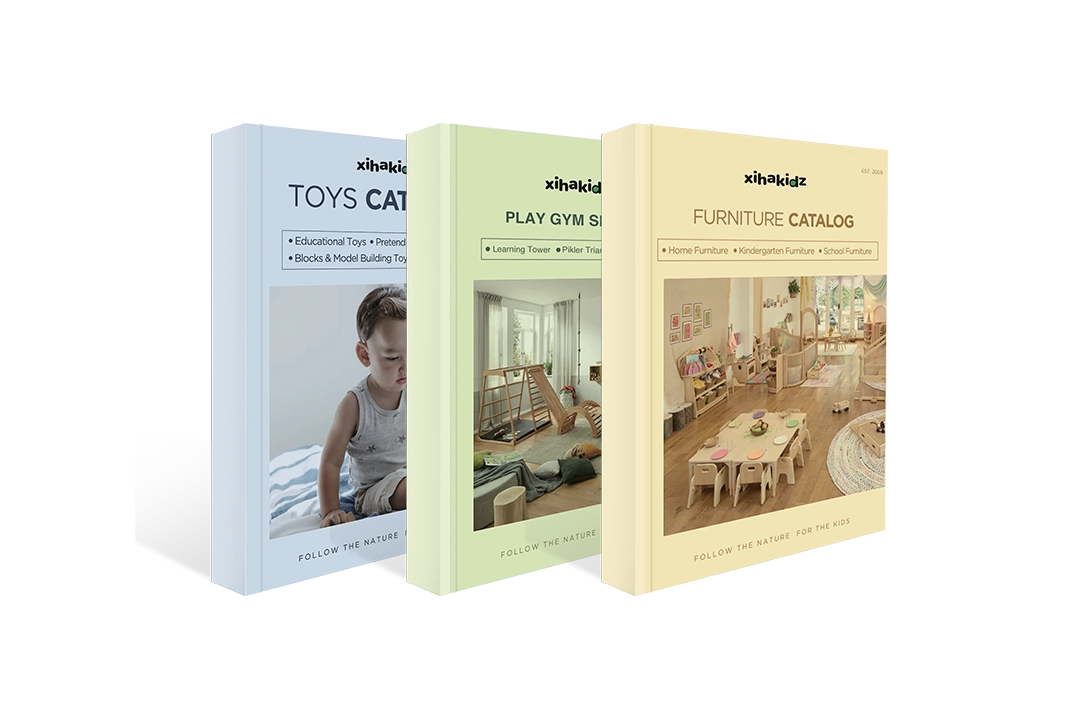従来の教育システムは柔軟性に欠け、個々の子どもの発達ニーズに適応できないことが多く、多くの子どもが学習意欲を失ったり、ストレスを感じたりする原因となっています。モンテッソーリ教育は、子ども中心の個別指導によるアプローチを提供し、実践的な学習、自立心、そして社会との協働を促し、より魅力的な学習体験を実現します。
モンテッソーリ教育の根底にあるのは、子どもは本来学ぶ意欲があり、適切な道具と環境があれば膨大な知識を吸収できるという信念です。このメソッドは特にモンテッソーリ幼児教育で人気があり、世界中で広く実践されています。モンテッソーリ教育の意味、その原則、そして子どもの発達への深い影響について、より深く掘り下げていきましょう。
What Is Montessori Education?
その モンテッソーリ教育のカリキュラム モンテッソーリ教育は、子どもたちが実践的な経験と自発的な活動を通して最もよく学ぶという考えに基づいて構築されています。このモンテッソーリ教育システムでは、子どもたちは特定のスキルを習得するために設計された様々な教材から課題を選択します。これにより、学ぶことへの深い、内発的な愛情が育まれ、教育は単なる苦痛ではなく、楽しいものになります。
カスタム家具ソリューションで教室を変身させましょう
モンテッソーリ教育とはどういう意味でしょうか?それは、子どもの知性、社会性、そして感情を育むことです。この教育法では、教師(ガイド)が控えめな指導を行いながら、子どもたちが自分の興味を追求できるようにします。このモンテッソーリ教育アプローチは、生涯にわたる学習に不可欠な批判的思考力、自立心、そして問題解決能力を育みます。
モンテッソーリ教育の進化
モンテッソーリ教育の歴史は、マリア・モンテッソーリ博士が最初の「カーサ・デイ・バンビーニローマの「子どもの家」で誕生しました。モンテッソーリ教育法は、もともと恵まれない子どもたちのために考案されましたが、子どもたちの自立と学力向上を支援する効果で急速に注目を集めました。長年にわたり、モンテッソーリの理念は幼児教育から初等教育、さらには中等教育へと広がりました。
モンテッソーリ教育が世界中で普及した理由の一つは、その適応性です。幼児教育研究が進むにつれ、モンテッソーリ教育理論は科学的研究によって裏付けられ、子ども主導の実践的な学習環境の重要性が認識されるようになりました。今日、モンテッソーリ教育は世界中で認められ、尊重されており、140カ国以上で数千もの学校がモンテッソーリ教育のアプローチを幼児教育に取り入れています。
個別学習の需要が高まるにつれて、モンテッソーリ教育哲学は進化を続け、現代の教育システムや代替教育モデルに影響を与えています。
マリア・モンテッソーリを理解する
イタリアの医師であり教育者でもある マリア・モンテッソーリ博士は、子ども中心のアプローチを提唱することで教育に革命をもたらしました。彼女の医学的背景は、子どもの自然な学習行動の観察において重要な役割を果たし、モンテッソーリ教育法の開発につながりました。学習障害のある子どもたちへの彼女の活動は、柔軟で育成的な学習環境の必要性を浮き彫りにしました。

モンテッソーリはかつてこう言いました。「教育は子どもが行う自然なプロセスであり、言葉を聞くことによってではなく、環境の中での経験によって獲得されるものである。」という彼女の言葉は、体験学習に対する信念を反映しています。これらの マリア・モンテッソーリ教育の名言 子どもたちが自ら学びをコントロールできるよう、力づけることの重要性を強調しています。モンテッソーリの業績は教育理論に消えることのない足跡を残し、幼児期の心の発達に対する私たちの認識に影響を与えています。
10 Principles of the Montessori Method
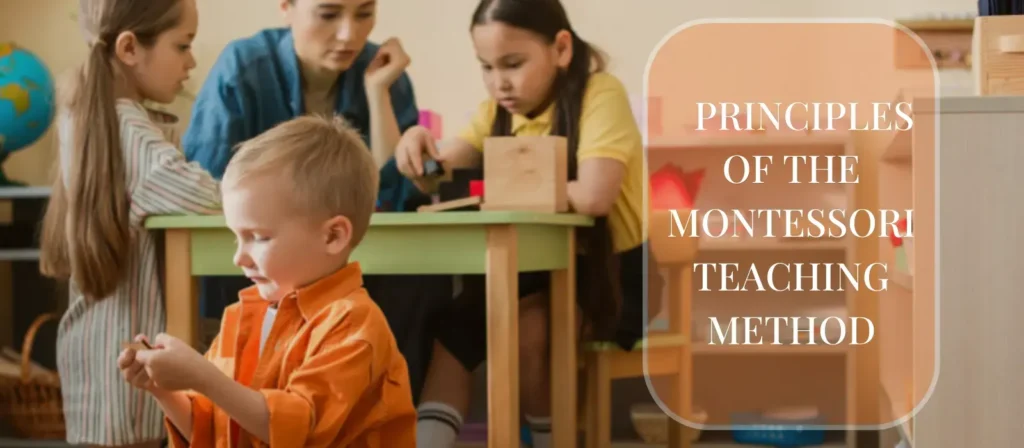
1. 子どもの尊重
Respect is the foundation of Montessori education. It means recognizing each child as a unique individual with their own interests, pace of development, and potential. Teachers observe carefully, guide gently, and allow children to make meaningful choices. By treating children with dignity and trust, they build confidence, self-worth, and a sense of mutual respect that supports healthy relationships and emotional growth.
2. Absorbent Mind
Maria Montessori described the young child’s mind as absorbent, meaning that children naturally and effortlessly take in information from their surroundings during their early years. From birth to around six years old, children learn continuously through direct experiences. The Montessori environment is designed to provide rich and purposeful activities that feed this capacity and help them build the foundation for language, culture, movement, and cognitive development.
3. 敏感期
Sensitive periods are specific stages in a child’s early development when they are particularly receptive to learning certain skills or concepts. During these windows, learning happens with ease and joy. Montessori teachers closely observe to identify these moments and provide the right materials and experiences at the right time, allowing children to make the most of their natural potential for growth.
4. Educating the Whole Child
Montessori education aims to nurture every aspect of a child’s development. It focuses not only on intellectual growth but also on emotional, social, physical, and moral development. Children are encouraged to explore practical life skills, social relationships, cultural understanding, and respect for the environment. This holistic approach builds independence, empathy, self-discipline, and a lifelong curiosity about the world.
5. Individualised Learning
Each child learns in a unique way and at their own pace. Montessori education is designed to respond to these differences rather than forcing all children to follow the same path. Lessons are tailored to individual needs, and children are free to explore topics that capture their interest. This personalized approach helps them develop a deeper understanding, sustained focus, and a strong sense of self-motivation.
6. Freedom of Movement and Choice
Freedom is a key principle in Montessori classrooms. Children are encouraged to move, explore, and choose their activities independently. They decide how long to work on a task and how they wish to approach it. This freedom builds decision-making skills, responsibility, and self-control. It also supports physical development and concentration by allowing children to engage with the environment in natural, purposeful ways.
7. Prepared Environment
The Montessori environment is carefully organized to support independent learning. Everything in the classroom is intentionally placed to encourage exploration and discovery. Materials are arranged from simple to complex and are accessible to children without adult help. The space is calm, orderly, and aesthetically pleasing, which promotes focus, curiosity, and a sense of belonging.
8. Intrinsic Motivation
Montessori education encourages children to learn because they find the process itself rewarding, not because of external rewards or punishments. Activities are meaningful, challenging, and engaging, which fosters genuine interest and perseverance. This focus on internal satisfaction helps children develop resilience, creativity, and a lifelong love of learning.
9. Independence
Independence is central to Montessori philosophy. Children are given opportunities to care for themselves, make decisions, and solve problems. They learn to manage tasks such as dressing, cleaning, and organizing their materials. As they gain confidence in their abilities, they develop self-reliance, responsibility, and a strong sense of capability that prepares them for future challenges.
10. Auto-Education (Self-Education)
Dr. Montessori believed that children have an inner drive to educate themselves. When provided with the right environment, materials, and freedom, they naturally seek knowledge and understanding through exploration and repetition. Teachers act as guides, introducing new ideas and then stepping back to let children construct their own understanding. This approach empowers them to become active, self-directed learners.
カスタム家具ソリューションで教室を変身させましょう
モンテッソーリ教育の核となる哲学
モンテッソーリ教育の根底にあるのは、子どもたちは生まれながらに好奇心旺盛で、自ら学びを主導できるという信念です。モンテッソーリ博士は、教育とは情報をただ受け取るだけの受動的なプロセスではなく、子どもたちが積極的に周囲の環境に関わり、経験を通して学ぶべきものであると提唱しました。
で モンテッソーリ教室子どもたちは、活動を選び、自分のペースで取り組み、実践的な学習を通して批判的思考力を育むことが奨励されます。教師はガイド役として、必要なツールやリソースを提供しながら、子どもたちが興味のあるトピックを探求できるように支援します。
モンテッソーリ教育の重要な要素
- 子ども中心の学習: Unlike traditional education models, where the teacher is the central figure, Montessori education focuses on the child’s interests and pace of learning. Each child is viewed as an individual with unique potential.
- 準備された環境教室環境は、自立心と探究心を促すよう、綿密に計画されています。教材は使いやすく、感覚と認知発達を刺激するように設計されています。
- 自主的な活動子どもたちは課題を選択できるため、学習に責任を持つことができます。この自律性は、自信と学習への愛着を育みます。
- 混合年齢グループモンテッソーリ教育のクラスでは、通常、年齢の異なる子どもたちが一緒に学び、仲間同士の学びやメンタリングを促します。年上の生徒が年下の生徒を助けることが多く、社会的、感情的な絆が強まります。
- 発見を通して学ぶ: モンテッソーリ教材 子どもたちが間違いから学び、自力で正しい答えを見つけられるように、自己修正ができるように設計されており、このプロセスを通して問題解決能力と批判的思考力を育みます。
モンテッソーリ教育は伝統的な教育とどう違うのか
モンテッソーリ教育は、特に教育と学習へのアプローチにおいて、従来の学校教育とはいくつかの点で異なります。従来の教育はより体系化された教師主導のカリキュラムに従いますが、モンテッソーリ教育は自発的で体験的な学習を重視します。主な違いは以下のとおりです。
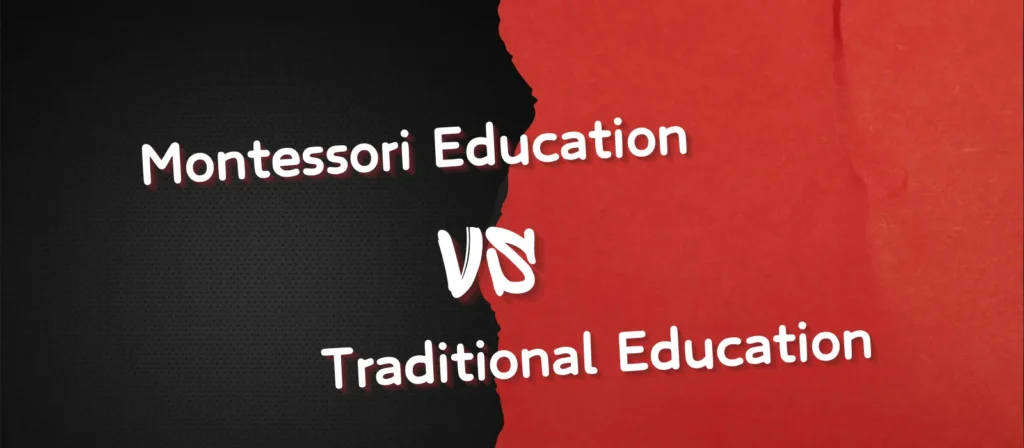
Montessori Education vs Traditional Education
| 側面 | モンテッソーリ教育 | 伝統的な教育 |
|---|---|---|
| Learning Approach | Child-centered and self-directed. Children choose activities based on their interests and work at their own pace. | Teacher-centered and curriculum-driven. All students follow the same lessons and pace set by the teacher. |
| 教師の役割 | Acts as a guide and observer who facilitates learning and supports individual growth. | Serves as the primary source of knowledge and directs the learning process through lectures and instructions. |
| Learning Environment | Prepared environment designed to encourage exploration, independence, and hands-on learning. | Standard classroom layout with desks facing the teacher, focusing on listening and note-taking. |
| Curriculum Structure | Flexible and individualized, adapting to each child’s developmental needs and interests. | Fixed and standardized, designed for the average student and delivered in a uniform way. |
| Pace of Learning | Children progress at their own pace, allowing deeper understanding and mastery before moving on. | All students move through material at the same pace regardless of individual readiness. |
| 学習スタイル | Emphasizes experiential and hands-on learning through materials and real-life tasks. | Focuses primarily on memorization, textbooks, and theoretical lessons. |
| Classroom Dynamics | Mixed-age groups encourage peer learning, collaboration, and leadership development. | Same-age classes emphasize competition and comparison among students. |
| Motivation | Driven by intrinsic motivation and natural curiosity. Rewards come from the joy of learning itself. | Often relies on external rewards such as grades, praise, or fear of failure. |
| 評価 | Continuous observation and qualitative assessment of progress and development. | Periodic testing and grading are the main measures of academic performance. |
| Role of Mistakes | Mistakes are seen as valuable learning opportunities and part of the discovery process. | Mistakes are often discouraged and may be penalized, creating fear of failure. |
| Focus of Education | Educates the whole child, including intellectual, social, emotional, and practical life skills. | Focuses mainly on academic knowledge and standardized subject areas. |
カスタム家具ソリューションで教室を変身させましょう
モンテッソーリ教育のメリット
モンテッソーリ教育は、子どもの知的、情緒的、そして社会的な発達に多くのメリットをもたらします。これらのメリットにより、モンテッソーリ教育は、従来の教育モデルに代わる選択肢を求める親にとって魅力的な選択肢となっています。
1. 実践的な学習スキルの開発
モンテッソーリ教育の最大のメリットの一つは、実践的な学習スキルの育成です。触覚的な教材に触れることで、子どもたちは実践を通して学び、学問的な概念と実践的な生活スキルの両方を強化します。
2. 社会スキルの向上
モンテッソーリ教育の環境では、子どもたちは協調性と効果的なコミュニケーションを学びます。異年齢混合クラスでは、子どもたちが異年齢の仲間と交流し、共感と協力を学ぶことで、社会性の発達が促進されます。
3. 学習意欲
モンテッソーリ教育は、学ぶことへの真の情熱を育みます。子どもたちは興味のあるテーマを追求するよう促され、学習とのポジティブな繋がりが生まれ、生涯にわたる知的好奇心が育まれます。
4. 自律性の発達
モンテッソーリ教育の主要な目標の一つは、子どもの自立心を育むことです。日々の意思決定や自主的な課題を通して、子どもたちは自分の能力を信頼することを学び、自信を育み、将来の課題への備えをします。
5. 個々の学習ニーズへの対応
モンテッソーリ教育は、一人ひとりの子どもの発達ニーズに合わせた個別学習を可能にします。この個別化されたアプローチにより、特別なサポートを必要とする子どもや、優れた能力を持つ子どもには、成長に必要な注意とリソースが与えられます。
カスタム家具ソリューションで教室を変身させましょう
モンテッソーリ教育の課題
Although Montessori education offers many advantages, it is not without challenges. Understanding these difficulties helps educators, parents, and schools make informed decisions about whether the Montessori method is the right fit for their children and communities. The following are some of the most common challenges associated with Montessori education.
1. プログラム構造における高い柔軟性
モンテッソーリ教育法は柔軟性に優れていますが、より体系的な環境で成長する子どもたちにとっては、課題となることもあります。より高度な指導を必要とする子どもたちは、当初はプログラムのオープンエンドな性質に苦労するかもしれません。
2. コストの上昇
モンテッソーリ教育のデメリットの一つは、従来の学校教育よりも費用が高くなる可能性があることです。特別な教材、訓練を受けた教師、そして教師と生徒の比率の低さが、モンテッソーリ教育コースの費用を押し上げています。
3. オープン教室レイアウト
モンテッソーリ教室のオープンなレイアウトは自立心を育みますが、伝統的で規則的な環境に慣れている子どもたちにとっては、負担に感じることもあります。自由に動き回ったり、活動を選択したりすることは、より指示を必要とする子どもたちにとっては難しい場合があります。
4. Demand for Highly Trained Educators
To be a qualified Montessori teacher, one must undergo specialized training from accredited Montessori organizations in addition to standard teaching credentials. This training involves a deep understanding of child development, lesson presentation, and classroom management aligned with Montessori philosophy. As a result, there is a global shortage of certified Montessori teachers, particularly at the upper elementary and secondary levels.
5. Parental Understanding and Involvement
Montessori education works best when parents understand and support its philosophy. However, some families may struggle to accept certain principles, such as minimal use of grades, child-led learning, or the absence of traditional homework. Misalignment between home and school expectations can create confusion for children and limit the effectiveness of the Montessori approach.

モンテッソーリ教室:準備された環境
モンテッソーリ教育の最も特徴的な点の一つは、「準備された環境」です。この環境は、子どもの発達ニーズを考慮して設計されており、子どもが自由に動き回り、学習と成長を促す活動に参加できるようにします。
モンテッソーリ教育に適した環境の特徴
- 秩序とシンプルさモンテッソーリ教室は整理整頓され、散らかっていません。教材は論理的に配置されており、秩序と落ち着きを促し、子どもたちが学習に集中できるようにします。
- 天然素材モンテッソーリ教室では、木、金属、布といった自然素材や触感のよい素材を多く使用し、プラスチックは可能な限り避けています。これらの素材は感覚を刺激し、子どもたちが学習に意味を見出すきっかけとなります。
- アクセシビリティ教室内のあらゆるものが子どもの手の届く範囲に配置され、自立心を育みます。棚はオープンで、教材は魅力的かつ直感的に配置されており、探究心を育みます。
Montessori Education Curriculum
The Montessori curriculum is a carefully structured educational framework designed to support the natural development of the child. It focuses on nurturing intellectual, physical, social, and emotional growth through hands-on experiences, purposeful activities, and self-directed exploration. The curriculum is interdisciplinary, holistic, and highly adaptable to the individual needs and interests of each learner.
1. Practical Life
Practical life activities are the foundation of the Montessori curriculum. They include everyday tasks such as pouring, cleaning, buttoning, tying, cooking, and gardening. These activities teach children how to care for themselves, their environment, and others. Through repetition and purposeful movement, children develop fine motor skills, concentration, independence, and a sense of responsibility. Practical life exercises also prepare children for more complex learning by improving coordination and focus.
2. Sensorial
Sensorial activities help children refine their senses and understand the world around them. They explore differences in size, shape, color, texture, sound, smell, and taste through hands-on materials. These activities build the foundation for mathematical thinking, scientific observation, and language development. For example, children learn to classify and compare objects, enhancing their cognitive skills and preparing them for abstract concepts.
3. Language
Language learning in Montessori education is an integrated and natural process. It begins with oral language, storytelling, songs, and conversations, and gradually progresses to writing and reading. Montessori materials such as sandpaper letters and movable alphabet allow children to explore phonetic sounds and word construction. The curriculum also emphasizes vocabulary enrichment, grammar, and creative expression. By learning at their own pace, children develop strong communication skills and a deep love for language.
4. Mathematics
The Montessori approach introduces mathematical concepts through concrete, hands-on materials before moving to abstract thinking. Children use beads, rods, and number cards to understand numbers, quantity, sequencing, and operations. They explore concepts such as addition, subtraction, multiplication, and division in a tangible way. This method builds logical reasoning, problem-solving skills, and confidence in mathematics while nurturing a genuine interest in numerical relationships.
5. Cultural
Cultural studies expand the child’s understanding of the world and their place in it. This area includes geography, history, science, art, music, and world cultures. Montessori materials such as globes, puzzle maps, and timeline charts help children explore continents, countries, ecosystems, and historical events. By learning about diverse cultures and environments, children develop global awareness, empathy, and respect for diversity.
よくある質問
- モンテッソーリ教育はどの年齢層を対象に設計されていますか?
モンテッソーリ教育は通常、2歳半から6歳までの「チャイルドハウス」(就学前)の段階で提供されます。しかし、モンテッソーリプログラムは乳児、幼児、小学生、さらには中学生にも提供されています。 - モンテッソーリ教育は定められたカリキュラムに従いますか?
モンテッソーリ教育には基本原則と発達目標がありますが、厳格なカリキュラムに従うわけではありません。教師の観察に導かれながら、子どもたちが自分のペースで興味のある科目を探求できるようにします。 - モンテッソーリ教育は特別なニーズを持つ子供に適していますか?
はい、モンテッソーリ教育は様々な学習ニーズを持つ子どもたちをサポートするために適応させることができます。個別指導と柔軟な構造により、教師はそれぞれの子どもの能力に合わせて学習体験を調整することができます。 - モンテッソーリ教育を受ける生徒は成績評価やテストを受けますか?
モンテッソーリ教育では、子どもたちに成績評価やテストを与えることはなく、教師は子どもたち一人ひとりの発達を継続的に観察し、記録することで、その成長を評価します。 - モンテッソーリ教育は子供たちを伝統的な学校教育に備えさせることができるか?
はい、モンテッソーリ教育は、自立心、問題解決能力、批判的思考力、学習への愛を育むことで、子どもたちを伝統的な学校教育に備えることができます。 - 親は家庭でモンテッソーリ学習をどのようにサポートできるでしょうか?
親は、子どもに優しい環境を作り、制限のない教材を提供し、日々の活動を通して自立を促すことで、家庭でモンテッソーリの原則をサポートできます。
結論
モンテッソーリ教育法は、子どもの知性、社会性、そして感情を育む、力強いアプローチです。自立心、実践的な学習、そして自己動機づけを重視することで、生涯にわたる学習の確固たる基盤を築きます。モンテッソーリ教育には長所と短所がありますが、自律性の育成、批判的思考力の発達、個々の学習ニーズへの対応といったメリットは、より個別化された幼児教育を求める多くの家庭にとって、価値ある選択肢となっています。

